
Designing Financial Services That Put People First

Image: Source
In an industry often viewed as conservative and risk-averse, design thinking is emerging as a transformative approach that's revolutionizing how banks and financial institutions operate. For decades, the banking and financial services sector focused on compliance, security, and product development. But in the face of digital disruption, shifting customer expectations, and agile FinTech competitors, banks are being forced to rethink their strategies and that's where design thinking comes in.
This post explores how design thinking for the banking & financial services industry is not just a buzzword, but a powerful framework that’s reshaping customer experiences, enabling innovation, and driving operational excellence. We'll also look at how to implement design thinking in banking, highlight compelling design thinking case studies in banking, and examine its role in the FinTech revolution.
What Is Design Thinking?
Before diving into its impact on finance, it’s essential to understand what design thinking really is.
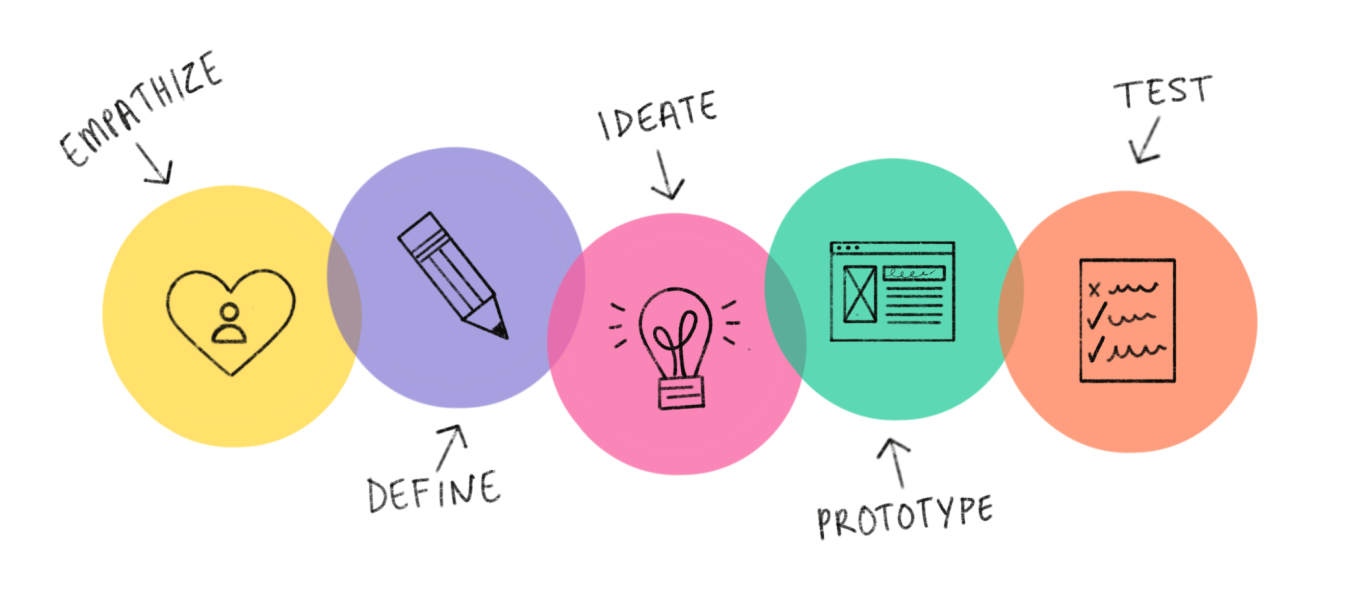
Image: Source
Design thinking is a human-centered, iterative process used for creative problem-solving. It prioritizes empathy, experimentation, and collaboration. The core phases typically include:
- Empathy: Understanding the users' needs, motivations, and pain points through observation, interviews, and research.
- Define: Clearly articulating the problem based on the insights gathered during the empathy phase.
- Ideate: Brainstorming a wide range of ideas and potential solutions.
- Prototype: Creating tangible representations of the ideas to test and refine them.
- Test: Gathering feedback on the prototypes and iterating on the solutions based on user feedback.
This process isn’t linear, it’s cyclical and adaptive, which makes it particularly suited for tackling complex and ambiguous challenges, like those found in the financial sector.
Why Design Thinking for Banking & Financial Services Industry?
The financial industry has experienced dramatic transformations in recent years:
- Digital transformation has made customers more demanding.
- FinTech startups are disrupting traditional business models.
- Regulatory changes are adding complexity.
- Global economic uncertainty has intensified competition.
In this environment, customer loyalty is fragile. The institutions that will thrive are those that can continuously innovate while keeping customer needs at the core.Design thinking empowers the financial sector to achieve just that.
Benefits of Using Design Thinking in the Financial Services Industry
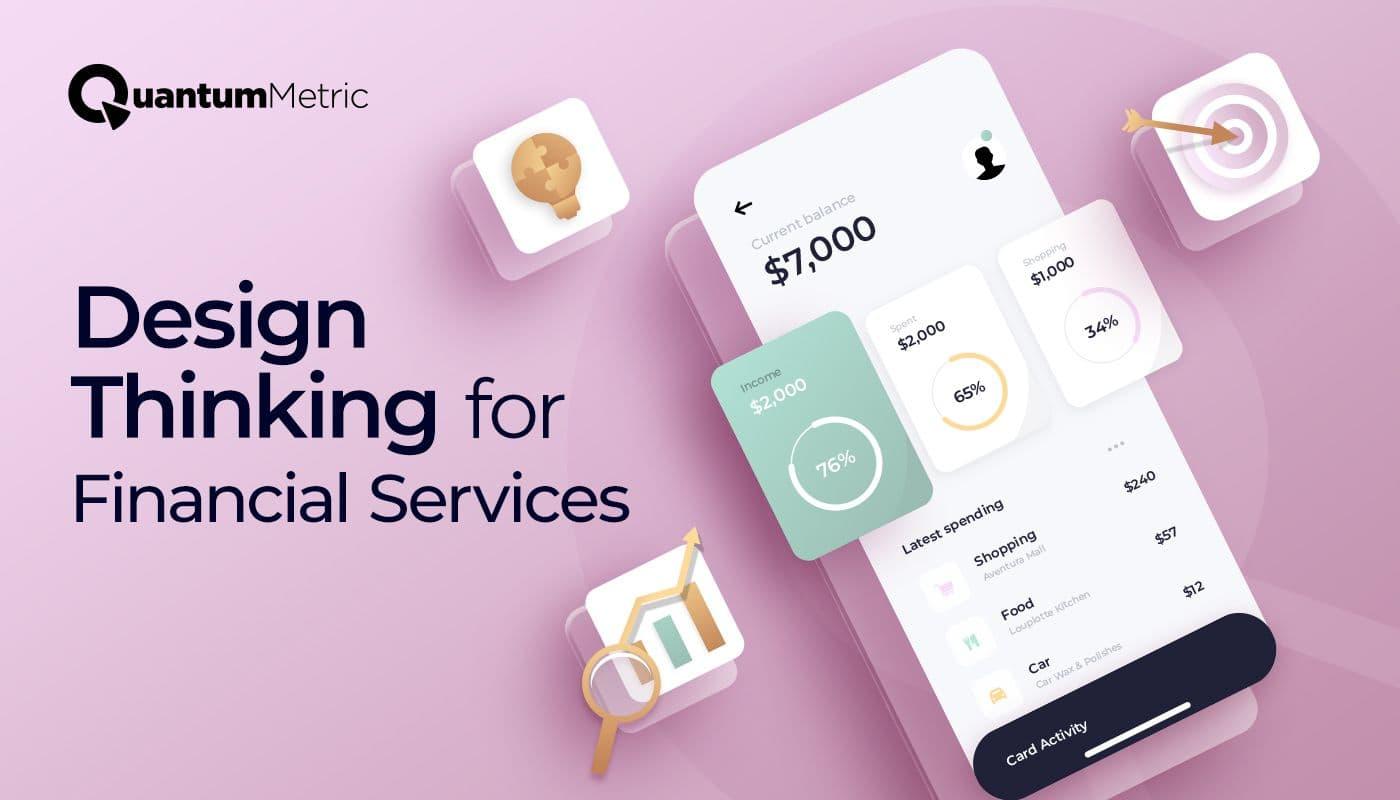
Image: Source
Implementing design thinking in finance offers numerous benefits across both customer-facing and internal operations:
1. Improved Customer Experience
By deeply understanding customer needs and pain points, banks can design more personalized and intuitive financial products. This leads to stronger engagement, higher retention, and improved loyalty.
2. Faster Innovation Cycles
Traditional development in financial institutions can be slow and risk-averse. The iterative nature of design thinking accelerates the process of testing and validating ideas, reducing time to market.
3. Enhanced Cross-functional Collaboration
Design thinking breaks down silos by involving diverse teams - marketing, IT, product, compliance, ensuring all perspectives are integrated into the design process.
4. Increased Customer Satisfaction
Creating seamless, empathetic, and user-friendly banking services naturally improves the overall satisfaction of customers, building trust in the institution.
Design Thinking in FinTech
While FinTech startups were among the first to adopt design thinking due to their digital-native nature, traditional banks are quickly catching up.
FinTech Advantages:
- Agile development and user-centric innovation from day one.
- Seamless integration of UX design and digital platforms.
- Fast adoption of new tech like AI, blockchain, and automation.
However, by leveraging design thinking in the banking landscape, even legacy institutions can reimagine their approach to product development and customer experience.
How to Implement Design Thinking in Banking
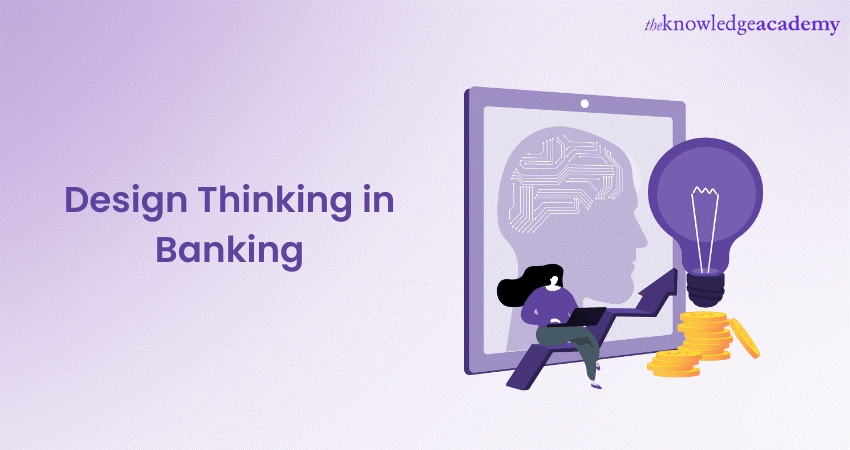
Image: Source
Implementing design thinking in banking is not just about running a few workshops or hiring UX designers. It requires a mindset shift and cultural transformation. Here’s how banks and financial institutions can embed design thinking effectively:
1. Start with Leadership Buy-In
Change begins at the top. Leaders need to embrace design thinking not just as a tool but as a strategic imperative. When leadership supports experimentation and encourages empathy-driven innovation, teams feel empowered to take bold steps.
2. Create Cross-Functional Teams
Design thinking thrives in diverse environments. Create cross-disciplinary teams that bring together designers, developers, analysts, compliance officers, and front-line employees. These diverse perspectives fuel more innovative and inclusive solutions.
3. Empathize with Real Users
Banks often assume they know their customers, but assumptions can be misleading. Conduct ethnographic research, interviews, and customer journey mapping to uncover real pain points, needs, and motivations.
4. Prototype Quickly and Inexpensively
Don’t wait for perfection. Create quick, low-fidelity prototypes, whether wireframes, sketches, or service blueprints and test them with users. Early feedback helps refine ideas and reduce costly missteps later.
5. Make Iteration a Habit
One of the most valuable aspects of design thinking is its emphasis on iteration. Even post-launch, products and services should evolve continuously based on real-world feedback.
How Design Thinking Benefits Banking and Financial Services
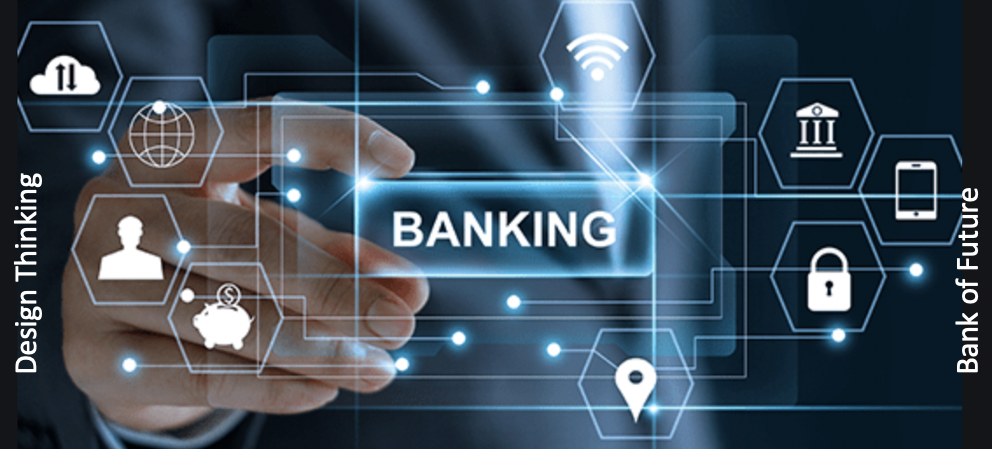
Image: Source
The financial sector faces several challenges that make Design Thinking particularly relevant:
- Changing Customer Expectations: Customers now expect seamless, personalized, and digital-first experiences. They want banking to be efficient, convenient, user-friendly, accessible and individually tailored to fit their lifestyles.
- Increased Competition: The rise of FinTech companies and other non-traditional financial service providers has intensified competition. These companies often prioritize user experience and offer innovative solutions, forcing traditional banks to adapt.
- Complex Regulations: The financial industry is heavily regulated, making innovation and change challenging. Design Thinking can help navigate these complexities by focusing on user needs within the constraints of regulations.
- Legacy Systems: Many financial institutions rely on outdated technology and legacy systems, which can hinder innovation and limit their ability to provide modern services. Design Thinking can help these institutions modernize their offerings by focusing on user needs and iteratively improving existing systems.
Design Thinking in Financial Sector: Use Cases
Let’s explore how design thinking in the financial sector is being applied across key areas:
1. Customer Onboarding
Traditional banking onboarding can be tedious and bureaucratic. By applying design thinking, institutions like BBVA and Capital One have redesigned onboarding journeys to be seamless, mobile-first, and tailored to individual customer needs.
2. Digital Product Design
From robo-advisors to budgeting apps, digital financial tools must be intuitive and engaging. Design thinking helps teams build interfaces that are not only functional but delightful to use, increasing adoption and retention.
3. Branch Transformation
Physical bank branches are not dead but their roles are evolving. Using design thinking, banks are turning branches into experience centers, blending human and digital interaction to educate, advise, and support customers.
4. Credit & Lending Innovation
Banks like DBS have used design thinking to streamline the lending process. By focusing on user pain points, they’ve cut down approval times, simplified documentation, and introduced AI-assisted tools to better match loans to customer profiles.
Design Thinking in FinTech: A Competitive Advantage
While traditional banks are learning to adopt design thinking, FinTech companies have it in their DNA. This is especially evident in how they approach product development and customer experience.

Image: Source
Apps like Revolut, Robinhood, and Chime have disrupted the industry by obsessing over user needs, pain points, and feedback loops. They experiment rapidly, launch MVPs (Minimum Viable Product), and iterate based on real-world data. All being the hallmarks of design thinking.
So, how can established banks draw inspiration from the approaches of FinTech leaders?
- Focus on simplicity: Avoid bloated features. Deliver what users really want.
- Invest in UX and UI: Good design goes beyond aesthetics; itdrives functionality.
- Build in feedback channels: Keep users involved in product evolution.
The result? Products that users love and advocate for—turning customers into brand ambassadors.
Design Thinking Case Studies in Banking
Let’s look at some real-world design thinking case studies in banking that demonstrate its power:
Bank of America: Keep the Change Program
- Challenge: Encouraging customers to save money.
- Solution: Bank of America used design thinking to understand how people felt about saving. They discovered that many found it overwhelming or inconvenient.
- Outcome: They introduced the “Keep the Change” program, which rounds up every debit card purchase and deposits the difference into a savings account. This small behavioral nudge led to increased customer engagement and new account openings.
ING Bank: Agile and Design Thinking at Scale
- Challenge: Boost innovation across the organization.
- Solution: ING adopted a hybrid model combining Agile methodology with design thinking principles. Teams were trained to empathize with customers, prototype quickly, and test rigorously.
- Outcome: This shift led to faster product development cycles, increased employee engagement, and significantly improved customer satisfaction scores.
Citi Ventures Studio: Human-Centered Innovation
- Challenge: Staying ahead in a crowded digital space.
- Solution: Citi created the Citi Ventures Studio, dedicated to applying human-centered design principles to create new financial products. Teams focused on underserved customer needs, from gig economy workers to retirees.
- Outcome: The studio has launched several successful products, including mobile savings tools and small business financing apps, informed entirely by user research.
ICICI Bank: Enhancing Customer Experience with iMobile Pay
- Challenge: Needed a full-fledged digital payments ecosystem With UPI and FinTech players like Google Pay and PhonePe gaining traction.
- Solution: ICICI Bank’s innovation team used ethnographic research, customer journey mapping, and prototype testing to understand user pain points and habits. Launch of iMobile Pay, which allows non-ICICI customers to use the app for UPI and bill payments—breaking the "only for customers" barrier.
- Outcome: iMobile Pay saw a 3x increase in downloads post-redesign and positioned ICICI Bank as a serious competitor in the digital wallet and payments space.
Challenges and the Road Ahead
Despite its clear advantages, implementing design thinking in the banking sector comes with its own challenges:
- Legacy Systems and Bureaucracy: Traditional banks often grapple with complex, outdated IT infrastructure and deeply entrenched bureaucratic processes that can hinder agile, iterative development.
- Risk Aversion and Regulatory Compliance: The highly regulated nature of the financial industry often fosters a risk-averse culture, which can be at odds with the experimental nature of design thinking. Navigating compliance requirements while innovating is a delicate balance.
- Siloed Organizational Structures: Many large banks operate in silos, with different departments having limited interaction. Design thinking requires breaking down these barriers to foster true collaboration.
- Shifting Mindsets: Moving from a product-centric or efficiency-focused mindset to a human-centered one requires a significant cultural shift across the organization.
Despite these hurdles, the imperative for banks to embrace design thinking is growing.
Final Thoughts
The future of banking belongs to those who can genuinely understand and serve their customers' evolving needs. By prioritizing empathy, fostering creativity, and embracing iterative experimentation, banks and financial services providers can move beyond simply offering transactions to building meaningful relationships and delivering truly valuable experiences. Design thinking for banking & financial services industry is not just a trend; it's a strategic imperative for long-term success in the digital age.
At Alien Design Studio, a leading UX and product design agency, we specialize in transforming banking and FinTech experiences through strategic design thinking. Whether you're modernizing a legacy system or building a digital-first solution from scratch — our team can help you design with empathy, innovation, and measurable impact.
Subscribe for Industry insights
Get cutting-edge design insights + Free pro
resources just for subscribing!
FAQ
More Insights


Nagar, Vanagaram, Chennai, Tamil
Nadu 600095, India
REGISTERED IN Chennai, INDIA.
"Global Team, Building for the world"







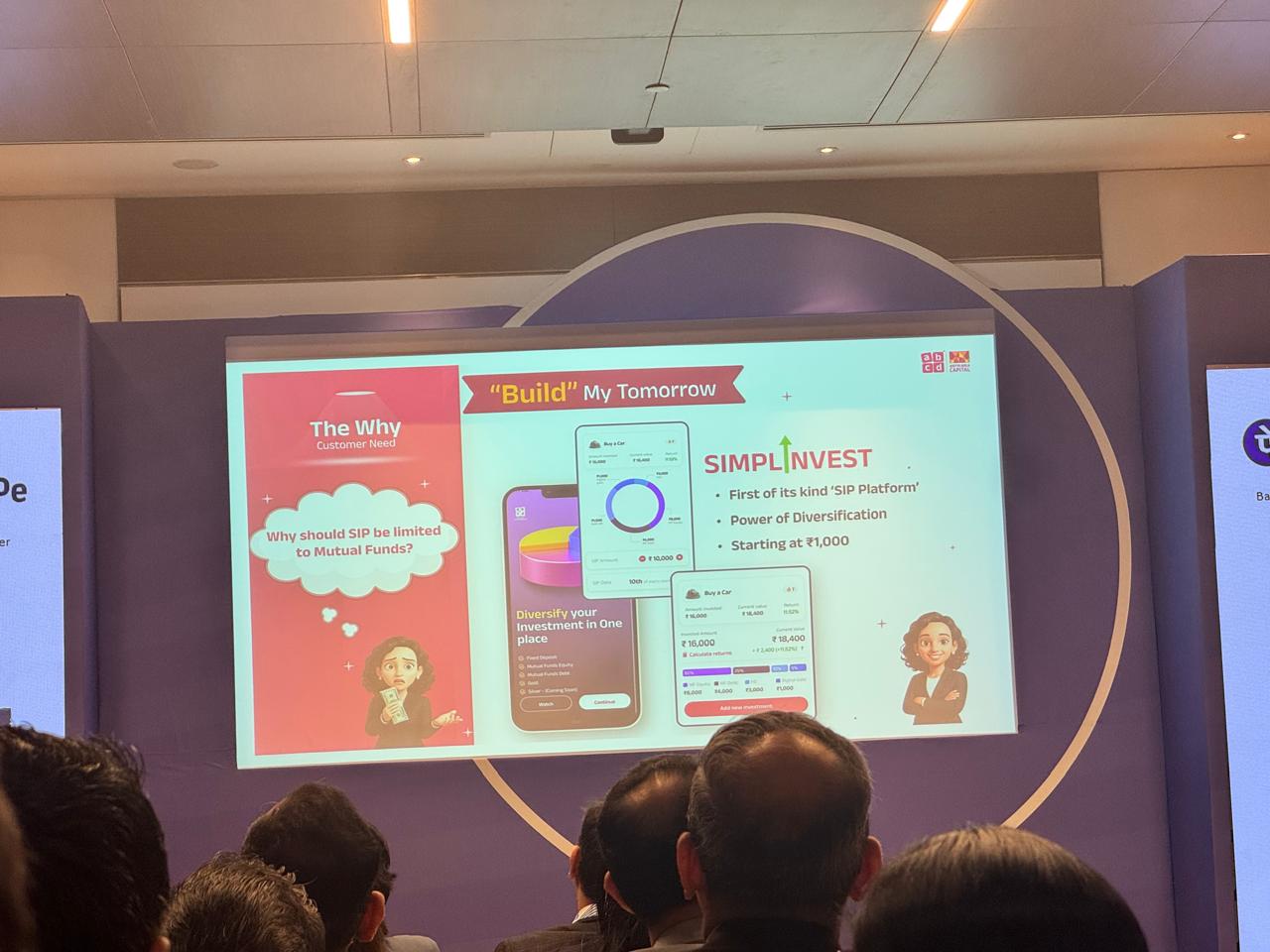





.webp)
.svg)